
The Church of St. Elizabeth (St. Elisabeth Church / St. Elisaber) or Elisabethkirche (Elisabethkirche) is a Catholic church that is distinguished by a clear and simple geometry and is one of the few buildings in the Classical style in Nuremberg.
The history of the chapel at this place dates back to the 13th century, when in 1209 King Otto IV granted the Teutonic (German) Order the opportunity to erect a small Gothic chapel. There was a hospital next to the chapel.
Later, the chapel was consecrated in honor of Elizabeth of Thuringia, canonized in 1235.
After the Reformation, Elizabeth's Church was the only Roman Catholic church on the territory of the Protestant imperial city of Nuremberg.
At the end of the 17th century, a small church was no longer enough for all parishioners. The Teutonic Order tried to expand the shrine, but faced resistance from the city council. Negotiations on the construction of a new church lasted from 1718 to 1780. Eventually, the city magistrate agreed. In 1785, the old Elizabeth Church was demolished.
The foundation stone of the new church was laid in 1785. This was followed by various hitches in construction, which extended the construction of the church for 118 years and were caused mainly by disputes over construction plans, the freezing of construction due to the end of the Teutonic Order and secularization.
The construction of the church was completed only in 1903, after the Roman Catholic Archdiocese of Bamberg acquired the church.
The church was badly damaged during the Second World War, but was restored afterwards.
Today's massive neoclassical-style rear church with an impressive dome 50 meters high has a high portal framed by columns with pilasters and a pediment.
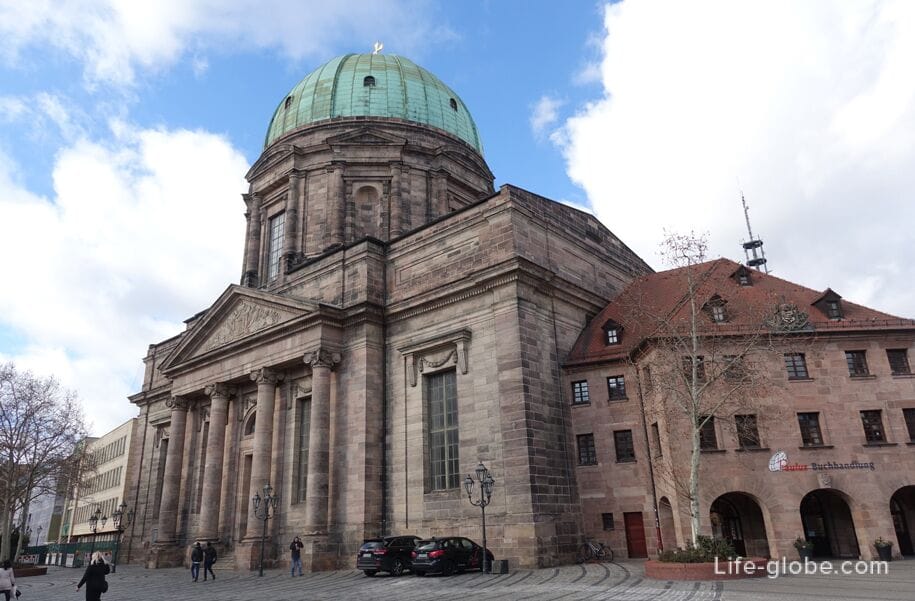
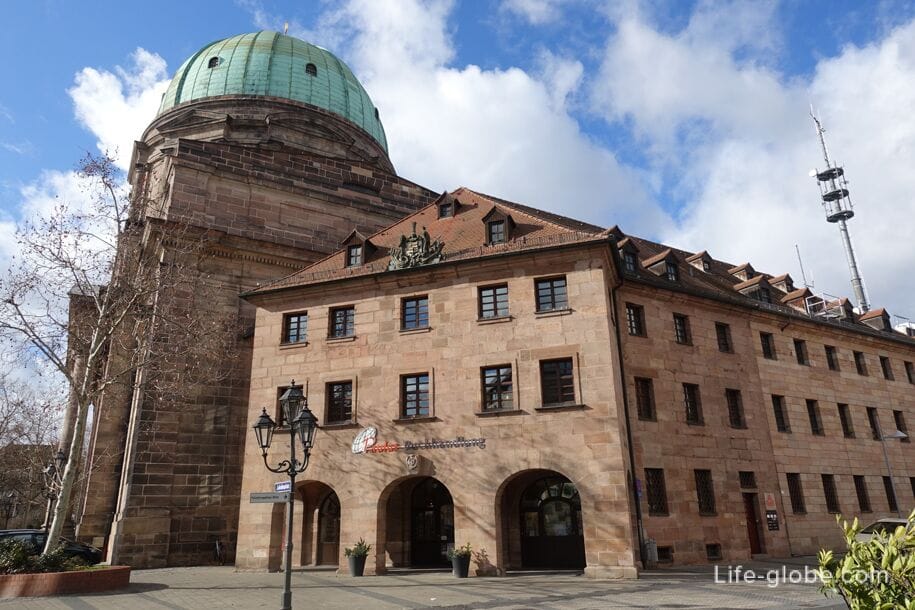
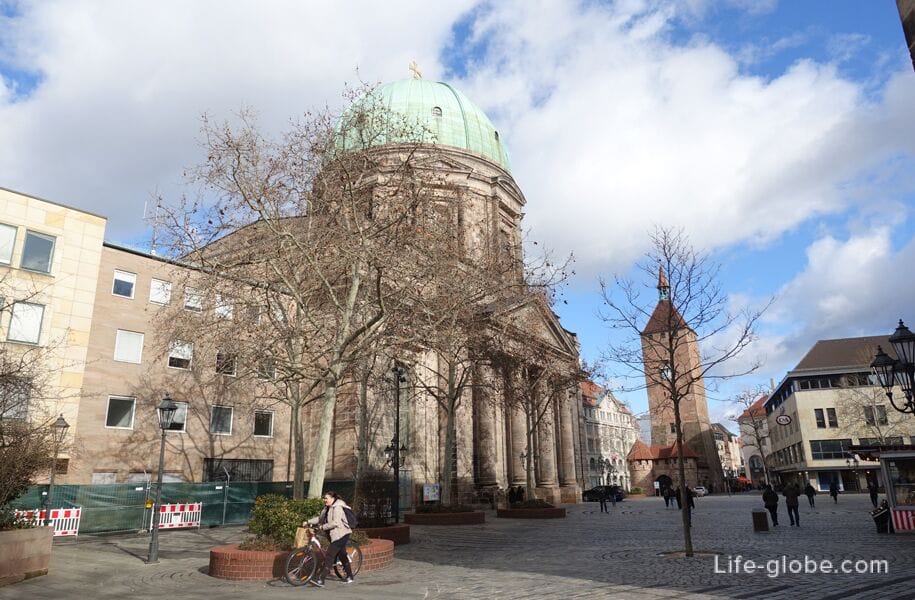
The interior of the Church of St. Elizabeth attracts attention with marble-lined columns with golden pilasters.
The main altar in the choir is crowned with a stone composition, in the center of which is a sculptural group depicting the scene of the crucifixion. In the niches on the left and right are neoclassical denominations.
In the center of the church, under the dome, there is an altar made of white marble.
The portable plexiglass altar was designed by the artist Peter Koenig.
There are four more altars in the church: Elizabeth, Mary, Joseph and Thomas. Each altar is decorated with a sculpture of the corresponding patron.
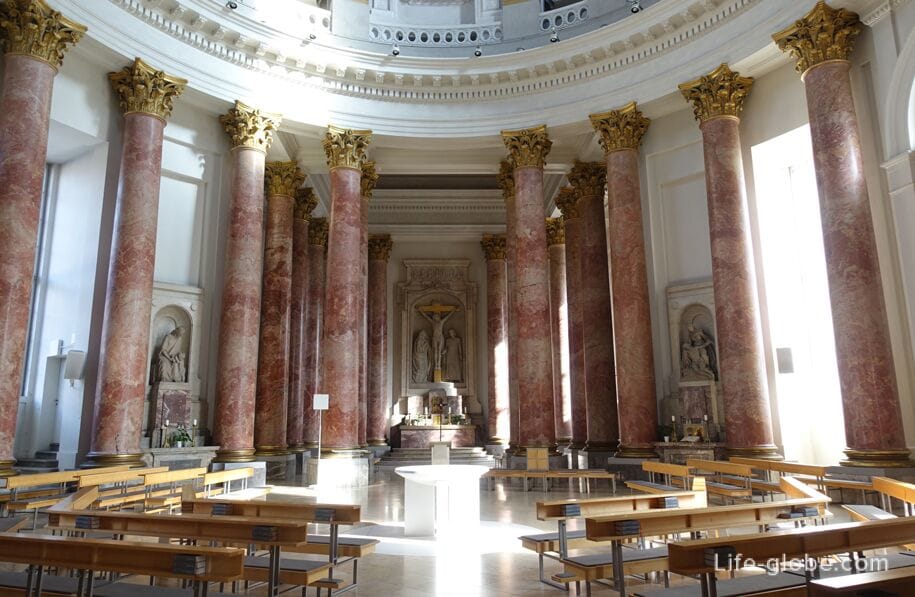
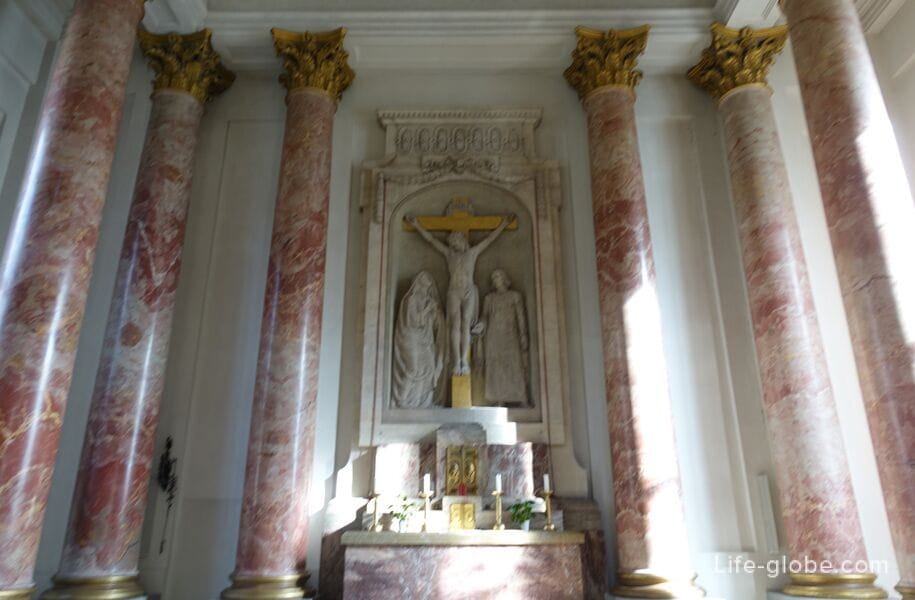
In the center of the entrance area of the shrine there is a font from 1903.
The organ in the Elisabethkirche was created in 1903. After the Second World War, it was cleaned and restored only in 2010. As one of the few original and unchangeable organs of this type, the church organ is considered one of the oldest in Nuremberg.
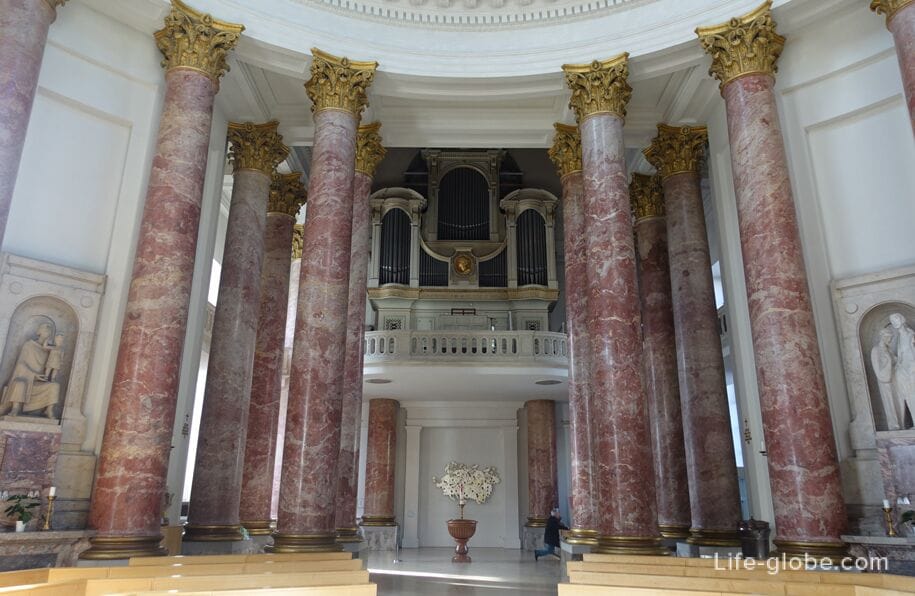
Under the dome of the church, in niches, there are statues of the twelve apostles.
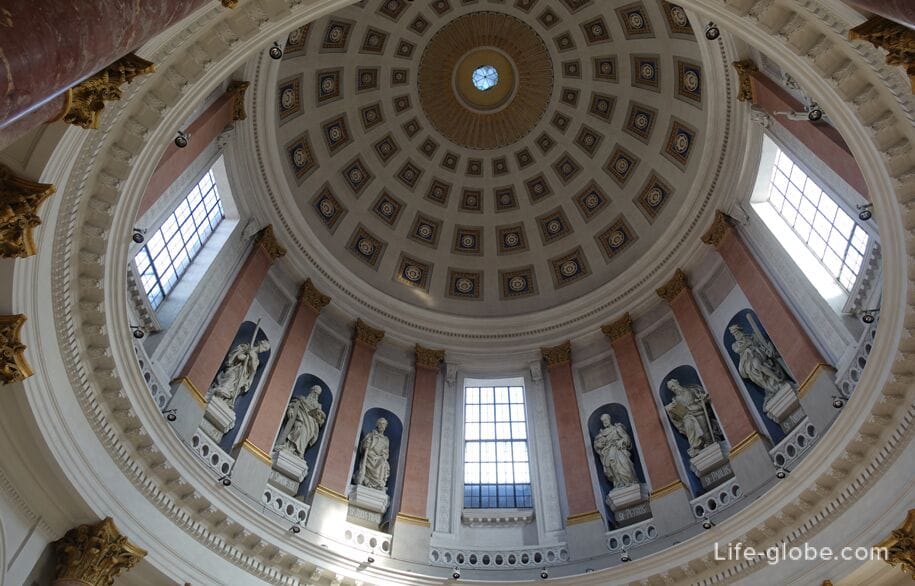
In the church there is a crypt located under the entrance and into which a staircase leads.
Initially, the crypt was a basement.
The crypt is entirely made of reddish sandstone and has a barrel-vaulted ceiling.
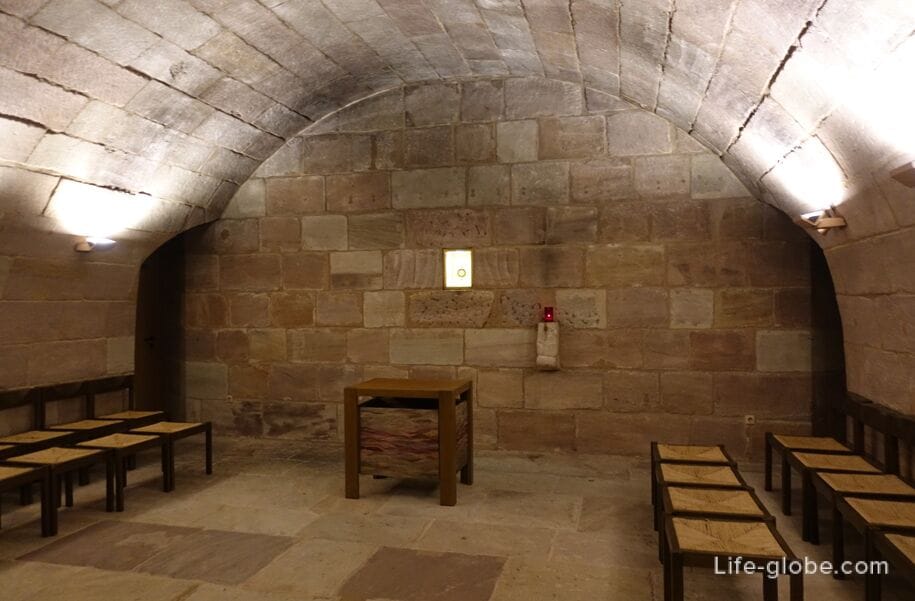
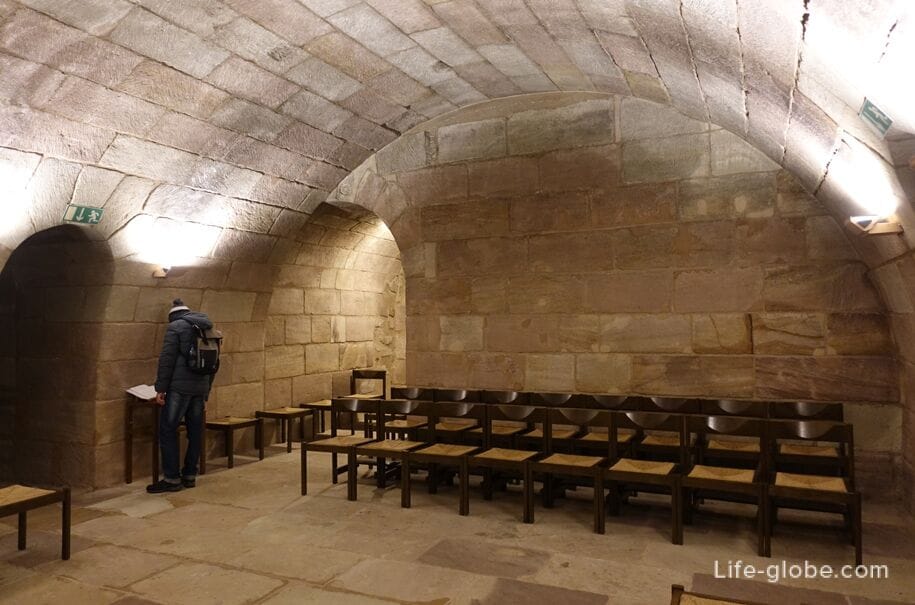

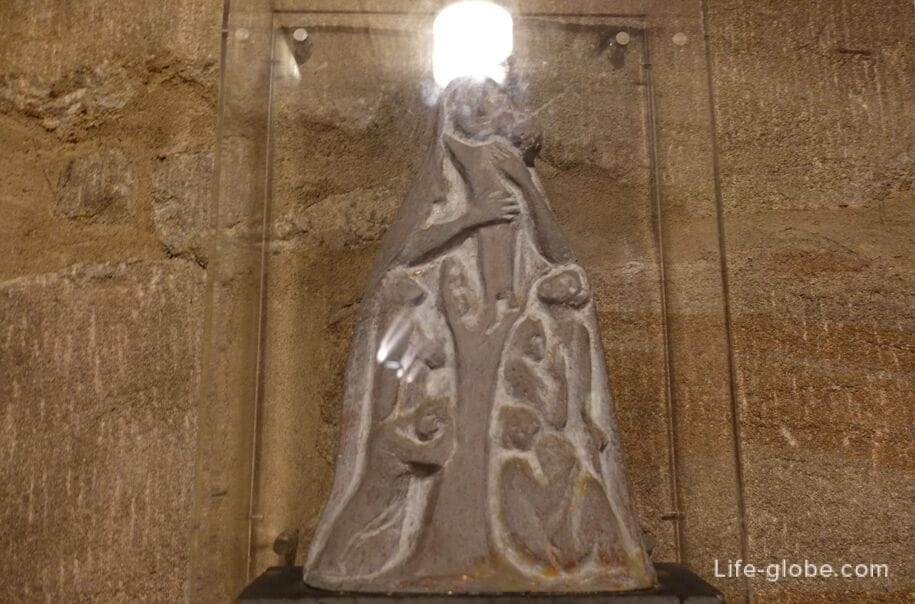
Entrance to the church and crypt is free (free).
The Church of St. Elizabeth is located in the southwestern part of the historic old town of Nuremberg, next to the Church of St. Jacob (Kirche St. Jakob), the White Tower (Weißer Turm) of the penultimate fortifications of the city and one of the most important modern works of art in the city - the fountain "Marriage Carousel" (Ehekarussell).
The address of the Church of St. Elizabeth: Jakobsplatz, 7-7a (Jakobsplatz).
In the photo below: the fountain "Marriage carousel", behind the fountain - the White Tower and the Church of St. Elizabeth
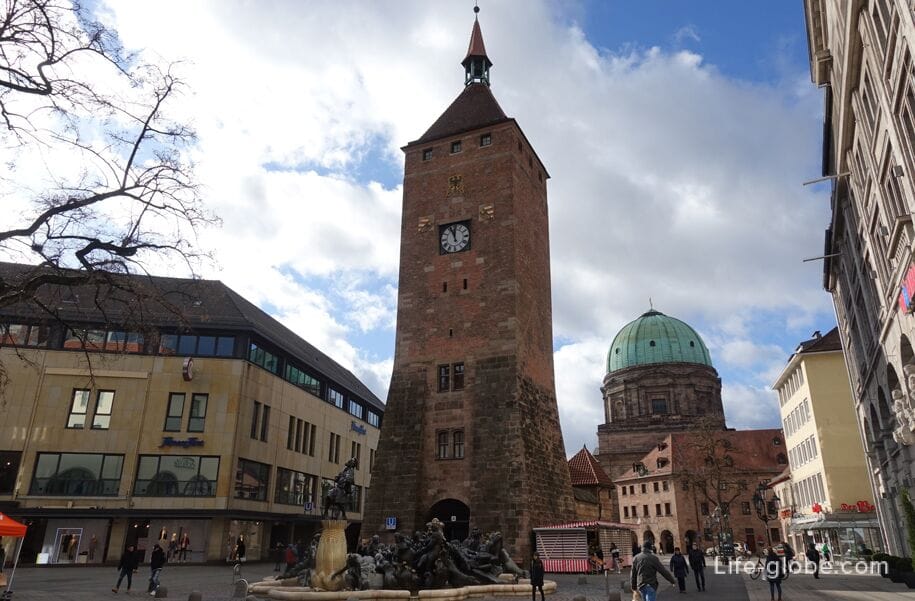
All accommodation facilities in Nuremberg, including in the city center and near the Elisabethkirche, can be viewed and booked here